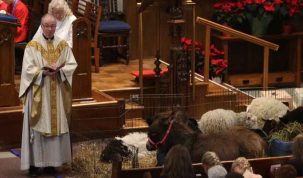By Cecilia Nasmith/Today’s Northumberland
The Town of Cobourg will put together an ad hoc working group to examine the possibility of identifying surplus municipal land as potential sites for affordable-housing projects.
Information on the entire inventory of municipal land was presented to council at this week’s committee-of-the-whole meeting, and Councillor Nicole Beatty made the motion to form the group, inspired by similar projects in a handful of Ontario municipalities that have produced projects ranging from a small community of tiny houses on green space to a three-storey 21-unit apartment house on 2.5 acres adjacent to the community centre that was formerly used for parking, maintenance and storage.
“I’m hoping council will see the potential in this working group,” Beatty said.
It will be a component of the town’s Community Improvement Plan, she continued, and the group would return to council with a working plan that would target potential sites and set out a plan for implementation.
Director of Planning and Development Glenn McGlashon discussed the challenge they face in terms of identifying suitable sites.
The municipality owns just under 10% of the municipal land base, McGlashon said, and almost two-thirds of that is not suitable for the purpose of residential construction – land that is in a flood plain, for example, or road allowances. Employment lands, already in short supply, are not likely to be sacrificed to any great degree for residential purposes.
“That leaves about 82 hectares overall,” he estimated, of which about 22 hectares are occupied by municipal facilities like the Cobourg Community Centre, Dressler House and the police station.
Much of the remainder is public parklands and open spaces.
“They all benefit the Town of Cobourg in terms of recreational value – social, cultural and environmental value,” McGlashon stated.
He recalled the determination of the Parks Master Plan of 2013 that Cobourg is actually behind many comparator communities in terms of parkland, and its recommendation of acquiring 20% more parkland over the ensuing decade.
McGlashon agrees with the importance of affordable housing, but reiterated that the parks and open spaces of the town are important too. He urged that any short list of sites should be the result of a process that includes looking at the importance of this land and the impact of their recommendations on neighbouring residents. For this reason, he suggested a comprehensive communications and public-engagement strategy be part of their work.
Membership on the group would consist of the council members who are co-ordinators of the Planning and Development, Public Works, and Parks and Recreation portfolios as well as representatives of two advisory committees – Parks and Recreation, and Planning and Development. Certain representatives of both the Town of Cobourg and County of Northumberland would be invited to sit in on the meetings in an advisory capacity.
A report back to identify potential sites will be presented at the committee-of-the whole meeting Sept. 13.




















